
Though upcycled fashion are most often created from used garments and textiles, there are many designers who adapt unconventional materials as the basis for their work. The objects featured in this section spotlight designers who creatively transform materials categorized as garbage into wearable fashion pieces. In some instances, designers challenge a textile’s designation as waste by highlighting its functionality and aesthetic qualities. Others intentionally foreground a materials’ status as trash as an opportunity to create conversation.
Rain Jacket and Bags
Rewilder
@rewildergoods / rewilder.com

Rewilder designer and co-founder Jenny Silber has a somewhat unconventional upcycling model. Rather than working with waste textiles from fashion, she acquires materials through relationships she’s forged with various industrial partners. The objects featured here were created with textile waste from the automotive industry. The silver metallic raincoat was made from covers put on new cars traveling by boat to import markets. These covers, intended to protect the automobiles from the elements during the journey, are used only once and thrown away once the cars have reached their destination. In addition to being aesthetically pleasing, this waterproof material is well suited for a rain jacket. The white bag is made from the production waste that results from creating air bags. This high-performance textile is durable and wipes clean easily. Looking closely, you can see areas of patterns and words woven into the materials that allude to their intended use.

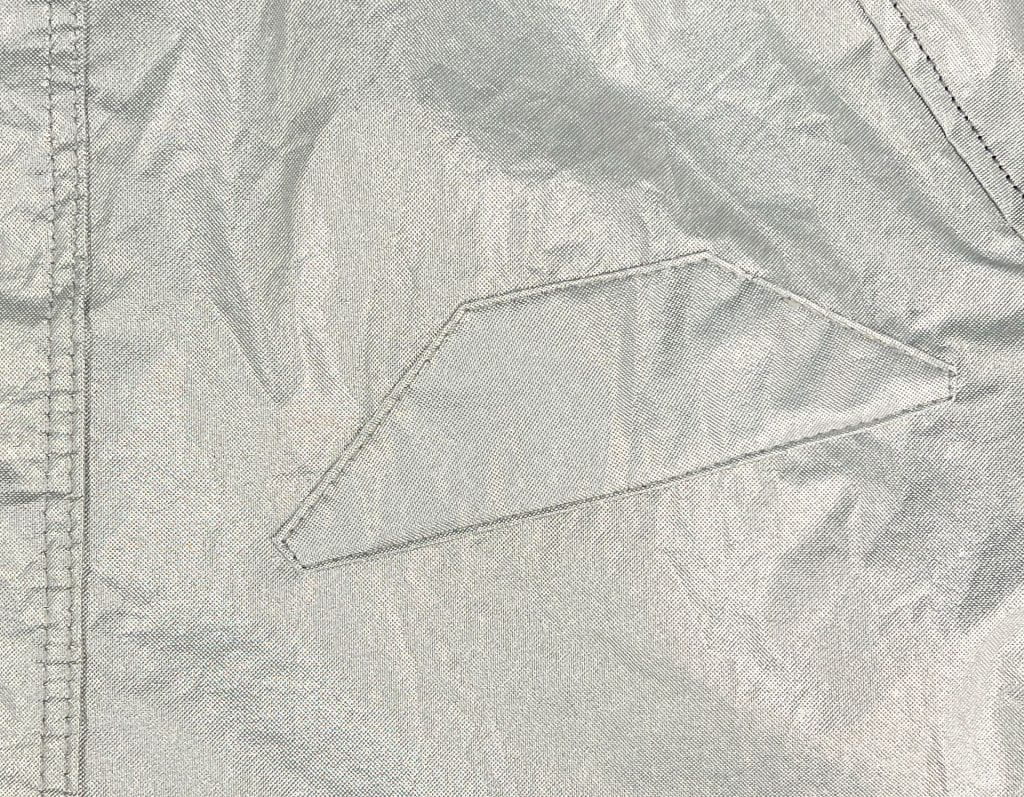
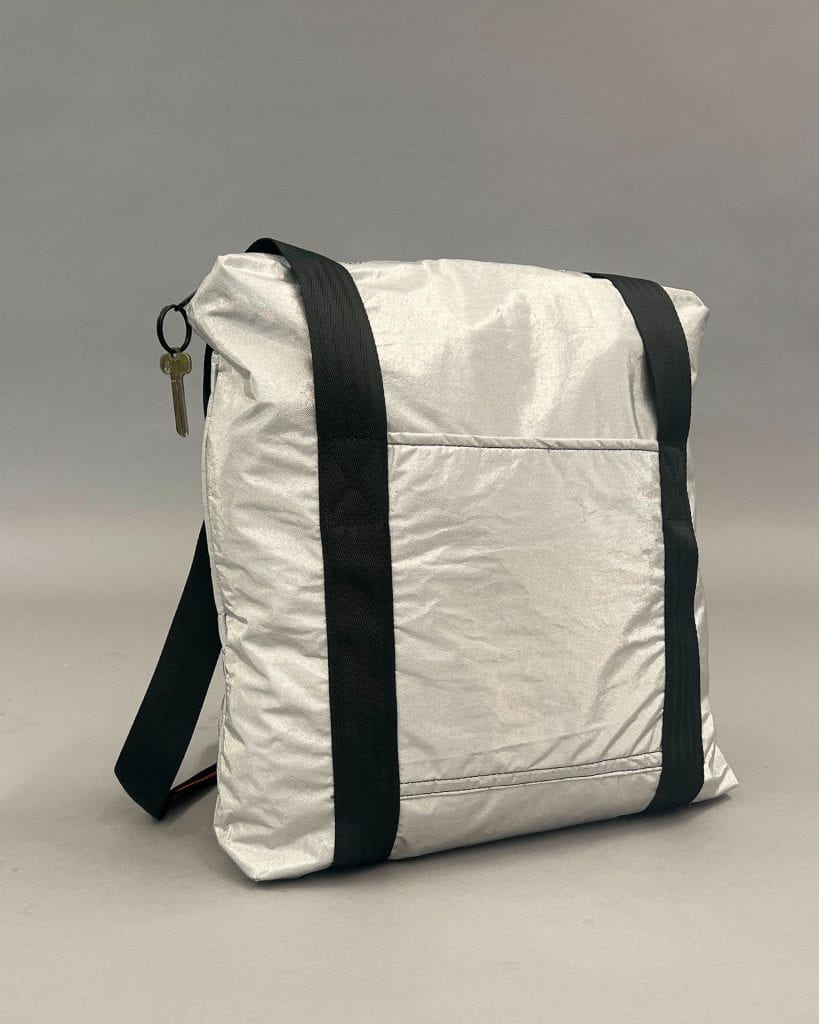
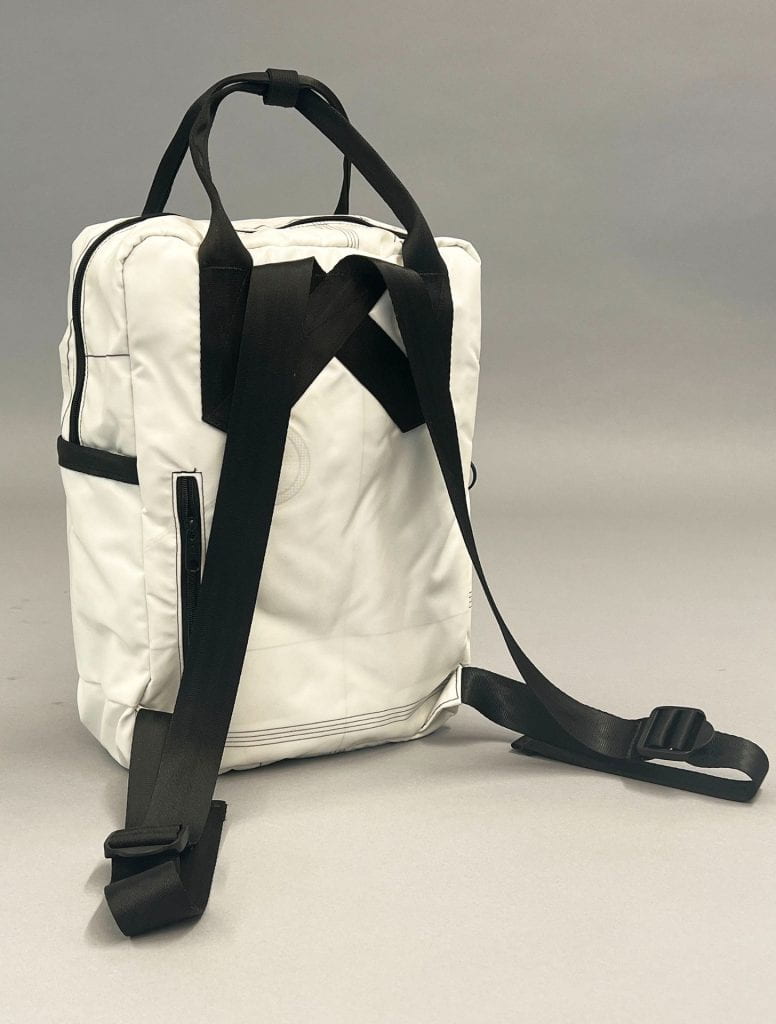
Trash Puffer
Claire Fleury
@clairefleurynyc / clairefleury.com

This puffer jacket was created using a translucent shower curtain for the outer shell and various plastic trash for the inner filling. The jacket’s designer, artist Claire Fleury, states that unconventional materials, such as the ones used here, are a frequent inspiration for the one-of-a-kind garments and accessories she creates. Because of the trash’s visibility, this jacket is a statement piece that is often a source of conversation. Fleury has even created custom replications of this garment using trash provided by the purchaser.



Heat-fused Plastic Handbags
Madison Wilds Burger
@madisonwildsburger / madisonwildsburger.com
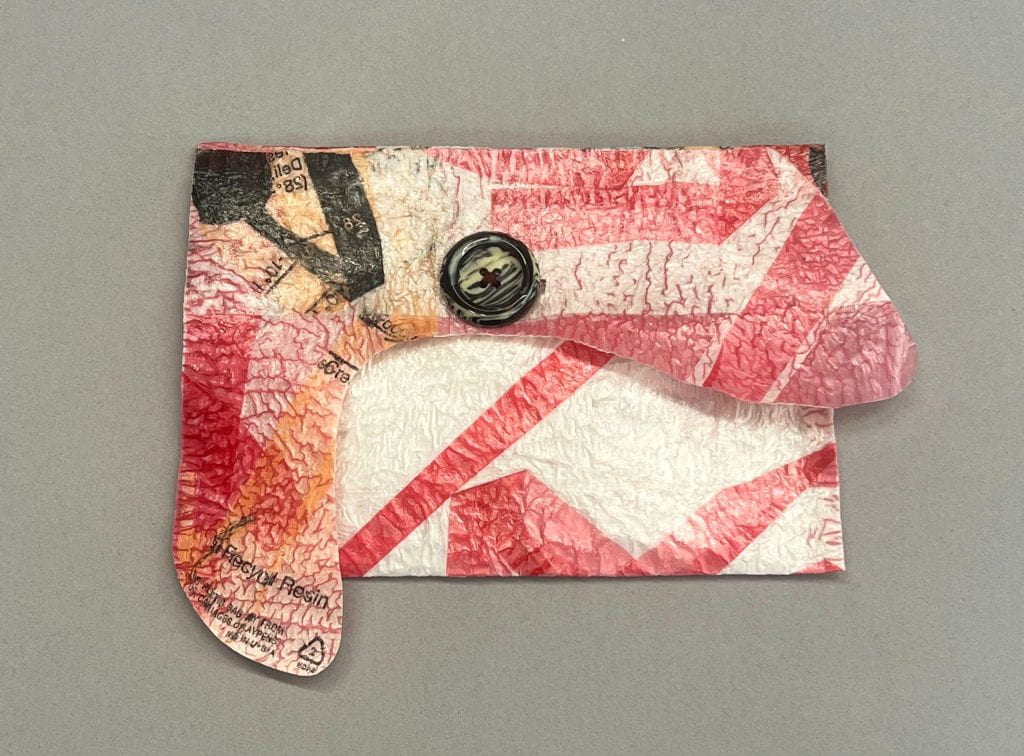
Madison Wilds Burger is the artist and designer behind Chicago-based sustainable brand Speculative Surfaces. The two bags seen in this display were made as part of Burger’s senior thesis collection at Pratt University. In thinking about ways to mitigate waste, she began experimenting with methods of heat fusing single-use plastic bags together into durable new textiles. The examples seen here are made by combining plastics of various shapes, sizes, and colors. During the process of creating this collection, Burger became particularly interested in the ways this material mimicked leather. She has since expanded her focus on leather alternatives, starting a lab where she creates lab-grown leather from bacteria and yeast.




Cuff Bracelets and Earrings
CANNED GOODS
@cannedgoodsco / cannedgoods.net
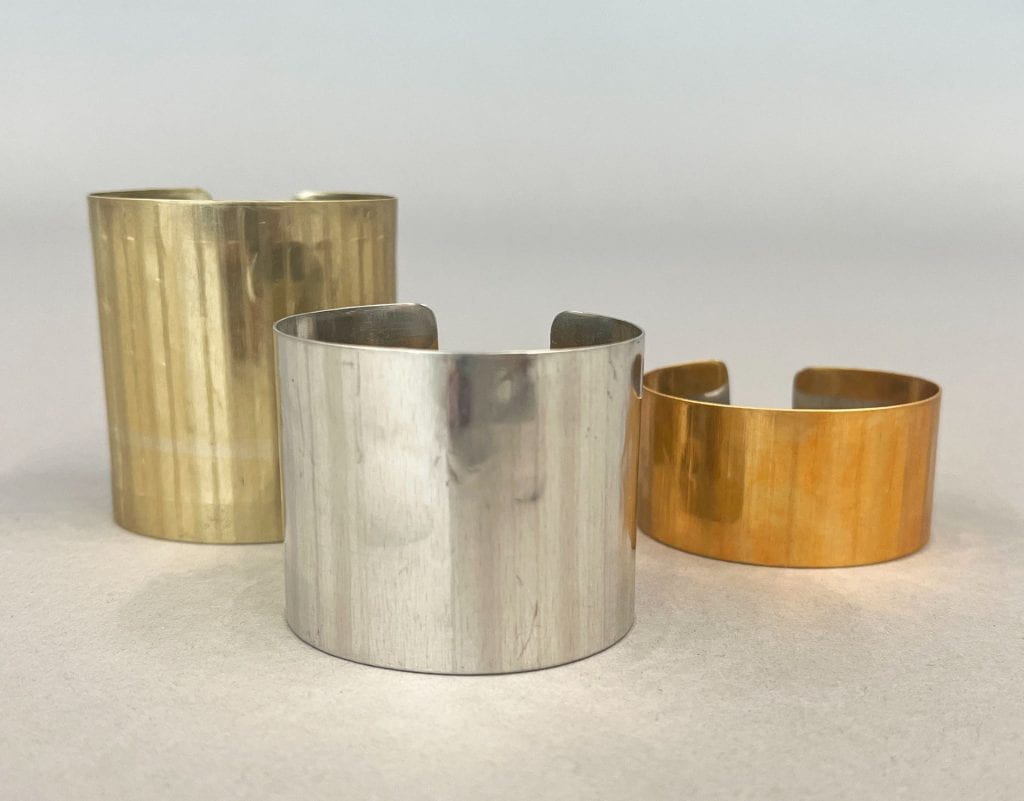
Thomas Paul Althaus’ upcycled jewelry brand Canned Goods creates all of their items from discarded tin food cans. As you can see in the pictures the gold, silver, and copper tones of the cans replicate the look of jewelry made from precious metals. Though the simple, high quality of the designs makes it difficult to tell these were once food containers, close inspection provides clues. Discreet, but visible serial numbers printed on some of the cans provide an enticing indication of the jewelry’s unexpected history.



Fanny Pack
Rareform
@rareform / rareform.com

This fanny pack is created from upcycled billboard vinyl. In the United States when billboards are changed, the vinyl from the advertisements being removed goes to the landfill. Rareform’s founders, brothers Alec and Aric Avedissian, state that they were inspired to start this business after seeing old billboard materials repurposed as roofing during a trip to South America. The blue and white abstract design on the bag’s front is the result of the billboard’s font being much larger than the scale of the bag. This abstracted aesthetic is a common trait in many of their bags. According to the brand’s website, Rareform currently upcycles 80% of all billboards in the United States. So far, they have saved over 286,000 billboards from the trash.